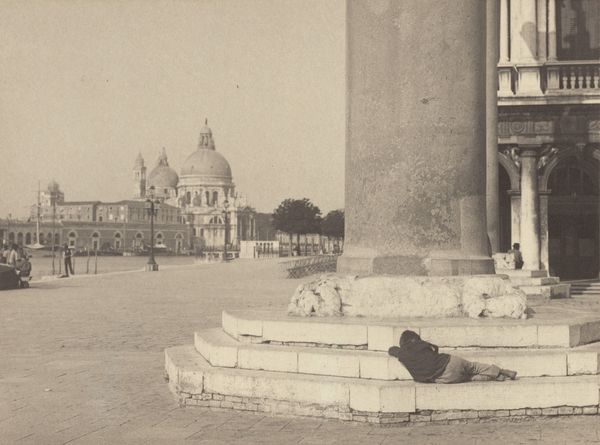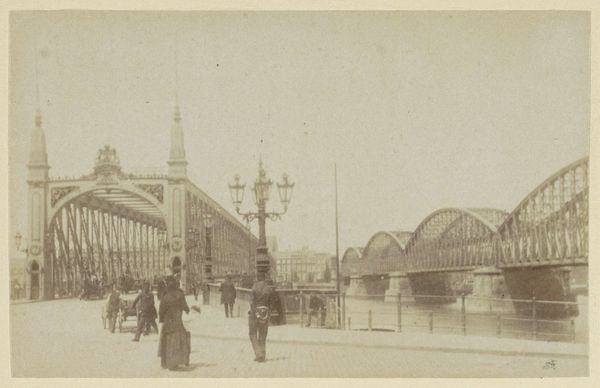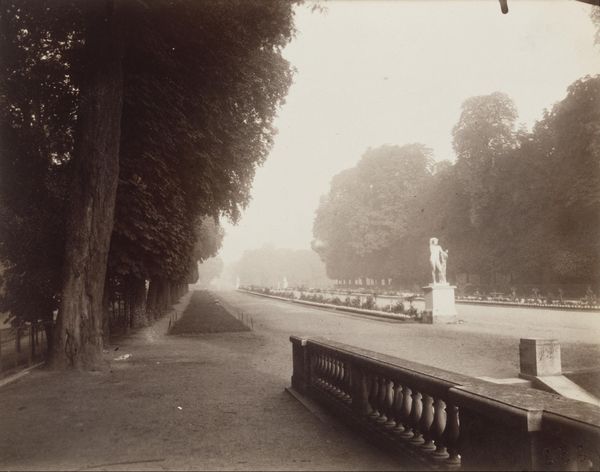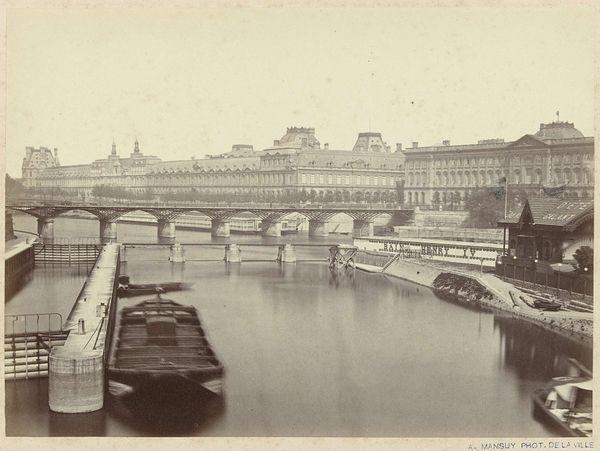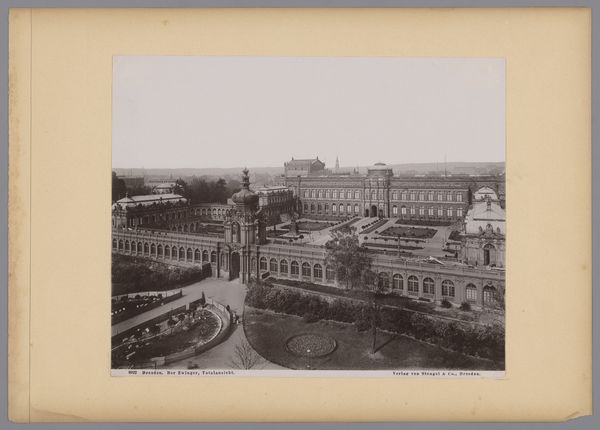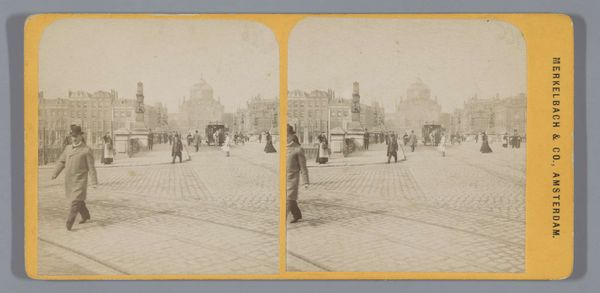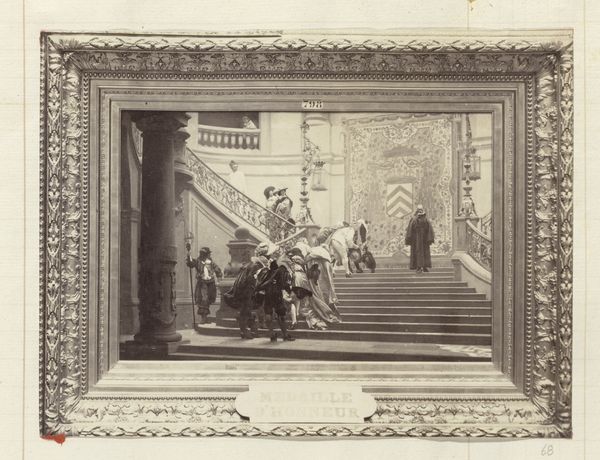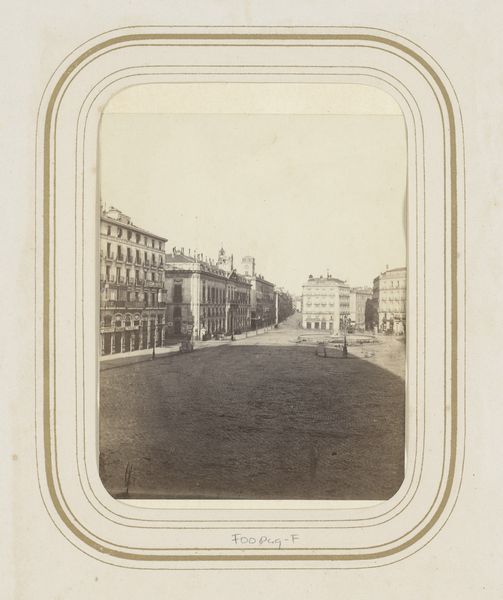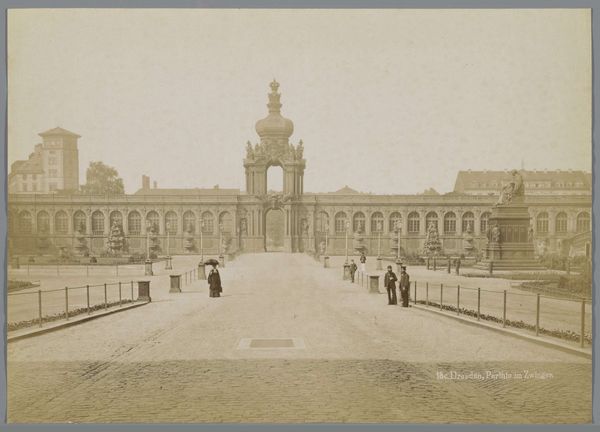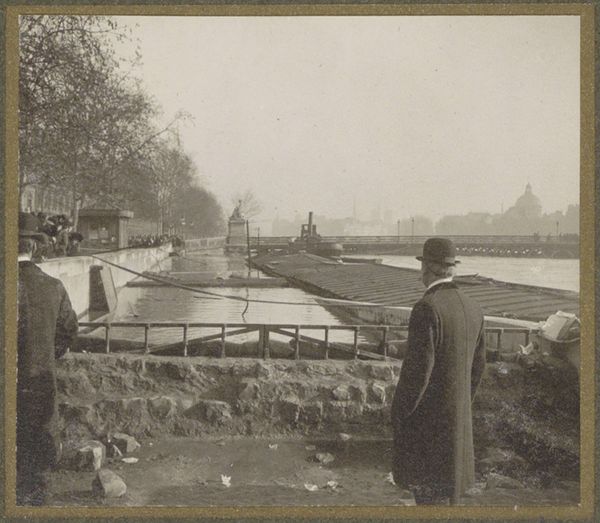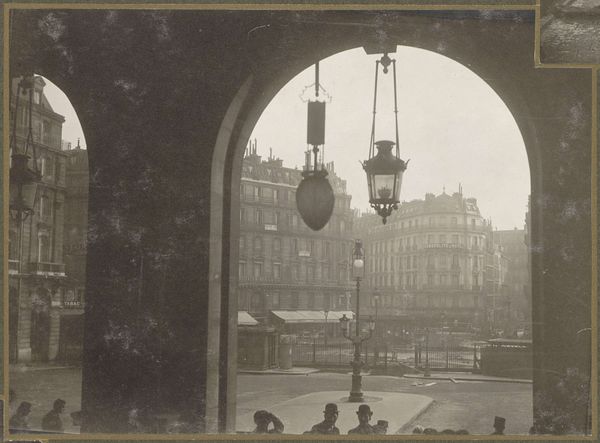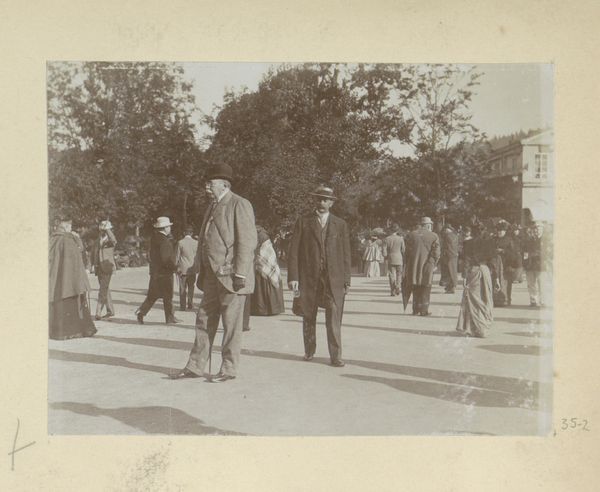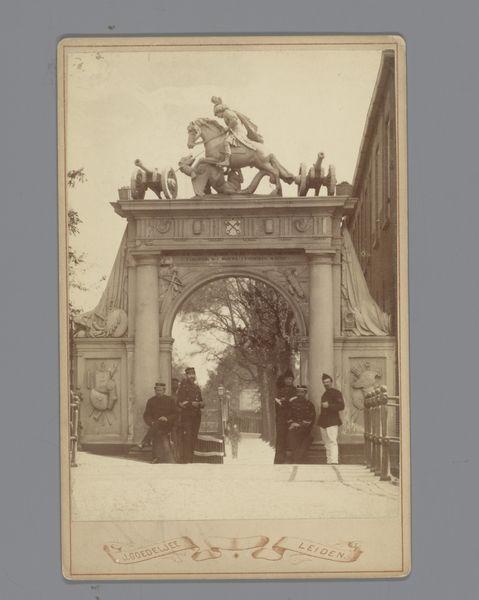
Dimensions: sheet (trimmed to image): 10.8 × 8.7 cm (4 1/4 × 3 7/16 in.) page size: 34.8 × 27.3 cm (13 11/16 × 10 3/4 in.)
Copyright: National Gallery of Art: CC0 1.0
Editor: Here we have Alfred Stieglitz's photograph, "Venice," likely taken between 1894 and 1896, rendered in gelatin silver. There's a stillness to this image, almost melancholic, focusing on the textures of stone and water. What’s your take on it? Curator: Well, I'm particularly struck by the choices inherent in its production. The gelatin silver process itself – a mass-reproducible method. It democratizes artmaking by challenging traditional notions of uniqueness, a crucial aspect to understand the intention of pictorialist photographers like Stieglitz. Editor: Democratizing, how so? Curator: Consider who could participate, what stories could be captured and circulated with new industrial materials. Also look at the labor of making and circulating this art, against the traditional themes within paintings, like history, biblical stories, or portraits of elites. In ‘Venice,’ for instance, the depiction of labor becomes a primary point of investigation rather than a backdrop. Notice how this emphasis alters the perception and value of the image itself. Editor: That's an interesting point. Focusing on labor makes me wonder, did this image change how Venice was perceived and promoted? Curator: Exactly. Reflect on the socio-economic context. Who gets to travel and experience the place? The materiality and wide availability of the photograph challenges previous notions of fine art. So, in your view, does the image critique or endorse this dynamic? Editor: I hadn't considered how much the method impacts the meaning, but I think it reveals a wider reach for images of Venice. Thank you for enlightening me on that. Curator: It’s fascinating to consider photography's relationship to both high art aspirations and its potential for documenting everyday existence, isn’t it?
Comments
No comments
Be the first to comment and join the conversation on the ultimate creative platform.
